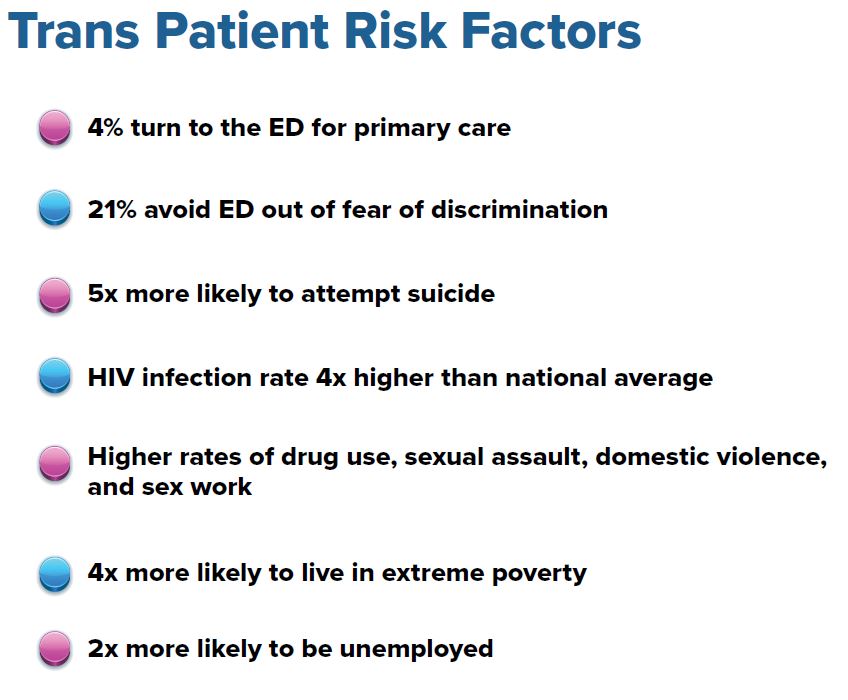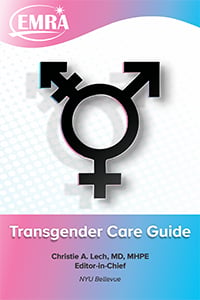Trans Patient Risk Factors
Much has been done to raise awareness for the health care needs of the Lesbian, Gay, Bisexual, Transgender, and Queer (LGBTQ) community. The National Transgender Discrimination Survey performed by the National LGBTQ Task Force and the National Center for Transgender Equality, the most extensive survey of trans disparities ever undertaken,1 details the ways in which trans patients represent a high-risk population. Results showed that, compared to the general population, trans people are 4 times more likely to live in extreme poverty and have double the rate of unemployment. This in turn affects their access to health care, with 4% using the emergency department for primary care. In addition, rates of suicide attempt are 5 times higher than the general population, and the rate of HIV infection is 4 times the national average, with higher rates of illicit drug use, sexual assault, intimate partner violence, and sex work for income or shelter.1
Emergency departments serve as safety nets for high-risk patients. Inherent in our training as emergency physicians, we attempt to offer care without bias or prejudice 24 hours a day, 7 days a week, and 365 days a year. Unfortunately, transgender patients frequently report feeling uncomfortable in the ED and, as a result, avoid seeking care for fear of discrimination and embarrassment. One of the largest peer-reviewed research papers exploring ED utilization patterns of trans individuals demonstrated that 21% of trans patients reported avoiding ED care for fear of discrimination.
Another issue was the perceived lack of knowledge on the part of health care providers, with more than half of those surveyed reporting trans-specific negative ED experiences. Similarly, another study found that in cases when inappropriate or disrespectful language was used towards trans patients, providers reported they did not know enough to provide care to these patients, and/or felt ill-equipped to educate other providers about trans issues.2
Research has shown a lack of teaching of transgender specific care in medical schools and emergency medicine residency programs. Specifically, in a survey of 132 medical schools in the United States and Canada, only one-third reported teaching about gender transitioning and gender affirmation surgery.3 In terms of Graduate Medical Education, a survey of EM residency programs in the United States showed that only 26% of EM programs had presented a single lecture on LGBTQ health, and only 33% reported some incorporation of LGBTQ health in the curriculum, with an average of 45 minutes spent on LGBTQ content.4
Emergency departments serve as safety nets for high-risk patients. Inherent to our duty as emergency physicians, we strive to provide high-quality, sensitive care to all patients 24 hours a day, 7 days a week, 365 days a year.

One of the largest peer-reviewed research papers exploring ED utilization patterns of trans individuals demonstrated that 21% of trans patients reported avoiding ED care for fear of discrimination.





